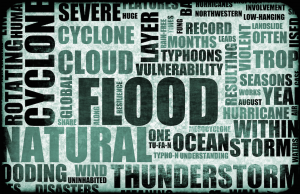Disaster Recovery Tips, Post Iowa Floods
By Lori McConvilleBlog As the floods of 2016 brought home the reminders of how disasters to businesses and infrastructure is a just a few sand bags away, we are reminded of some top tips to help IT teams deal with disaster recovery.
As the floods of 2016 brought home the reminders of how disasters to businesses and infrastructure is a just a few sand bags away, we are reminded of some top tips to help IT teams deal with disaster recovery.
For most, we survived the threat of flooding and severe data loss. So now that this period has passed, what have we learned? How were you prepared this time versus last time? Was your disaster plan tested and proven? Do you even have a disaster plan in place? What happens if your company suffered a data loss?
Disasters at work happen all the time, ranging from ransomware attacks to power outages, storms to fires and each one requires a different plan and type of response. Planning ahead is one of the easiest ways to ensure that your business can recover quickly. Here are a few tips to help you minimize the effects of a disaster:
- Determine your goals early. Before creating your plan, you need to prepare for potential risks. By coming up with a list of external or internal events that affect your company, it allows you the opportunity to think through all the threats that could cause damage. Defining your recovery time objectives (RTO) criteria is critical, as well as calculating your recovery point objectives (RPO) which is determining the maximum age of data that you plan to backup. Recovery time actual (RTA) is the time that is required to deliver recovered infrastructure and this should always be tested.
- Identify your team and meeting area. Your plan must identify key personnel and a chain of command for when disaster strikes. Where can key personnel be reached? What is their contact information and what is the best way to reach them considering different scenarios? If operations cannot resume in your original office, the disaster recovery team should know of your new meeting location and procedures for working remotely.
- Prioritize operations. Data recovery and restoration should be your number one goal of your plan. Decide the order of business functions and how they will be restored. Functions that are important for business income (therefore generating sales) should remain your first priority. The more expensive your downtime is, the more comprehensive your mitigation plan should be.
- Test and maintain your plan. Don’t let your first test be the real event. Once your plans have been created, they need to be tested. Walk through each test of your plan and never stop assessing. You should always assess your business continuity and disaster recovery strategies and test frequently as your business grows.
Planning for a disaster should be simple once you assess your risk, set your goals for disaster recovery and develop your plan. For anyone who has tested their DR plan, we are sure they didn’t feel their time was wasted. For further information on DR Planning and what scenario would work best for you, call Enseva at 319-450-0550 today. Don’t wait until disaster hits and then it’s too late.
